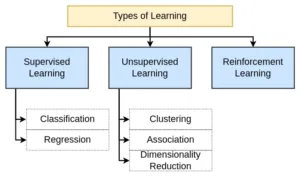Large Language Models (LLMs) have revolutionized the field of artificial intelligence (AI) by enabling machines to understand and generate human language in a once unimaginable way. These powerful models, built using vast datasets and sophisticated algorithms, are now at the core of numerous applications, from chatbots and virtual assistants to content generation and translation tools. In this article, we’ll explore how large language models function, the technology behind them, and some real-world use cases that illustrate their transformative potential.
How Large Language Models Work
Large language models are machine learning models designed to process and generate human language. They are trained on massive datasets containing billions of words, phrases, and sentences from various sources such as books, websites, and social media.
Here’s a simplified breakdown of how an LLM model works:
- Data Collection and Preprocessing: The process begins with collecting a vast amount of textual data. This data is then cleaned and preprocessed to remove irrelevant content or noise.
- Training: The model is trained using this data, learning to predict the next word in a sentence based on the context of the preceding words. This process involves complex statistical techniques that enable the model to learn patterns, sentence structures, and grammar rules.
- Fine-tuning: After the initial training, the LLM model can be fine-tuned for specific tasks, such as translation, summarization, or answering questions. Fine-tuning involves adjusting the model’s parameters to improve its accuracy and performance in specific domains.
- Inference: Once trained, the model can generate or process text. This is called inference, where the model uses its learned knowledge to predict and create coherent, contextually relevant text outputs.

Key Innovations in LLM Models
- Self-attention Mechanism: The self-attention mechanism is a crucial component of large language models. It allows the model to focus on different parts of a sentence based on their relevance to the task at hand.
- Transformers Architecture: Most large language models are built using the Transformer architecture, which enhances the model’s ability to handle long-range dependencies in text.
ALSO READ:
- Vision Transformer – An Image is Worth 16×16 Words: Transformers for Image Recognition at Scale
- What is MobileViT?
LLM Use Cases
The impact of large language models can be seen across various industries and applications. Here are some key use cases:
- Virtual Assistants and Chatbots: One of the most common applications of large language models is in virtual assistants like Siri, Google Assistant, and Amazon’s Alexa. These assistants rely on LLM models to understand user queries and generate appropriate responses in real-time. Similarly, chatbots in customer support use LLMs to handle queries, provide information, and automate routine tasks.
- Content Creation: LLM models can generate high-quality written content, from articles and blog posts to product descriptions and social media captions. Writers and marketers increasingly leverage these models to create content faster while maintaining quality.
- Translation and Summarization: Large language models have significantly advanced translation tasks, offering near-human-level translation capabilities for multiple languages. Moreover, they can also summarize long documents or articles into concise, easy-to-read formats.
- Code Generation: In software development, large language models (LLMs) can assist developers by generating code snippets based on user input. Tools like GitHub’s Copilot use LLMs to suggest code, making the development process more efficient and reducing errors.
- Research and Data Analysis: Researchers can use open-source large language models to extract insights from vast datasets or automate the analysis of scientific papers. This has the potential to speed up research across various disciplines.

Conclusion
Large language models have undoubtedly reshaped the landscape of artificial intelligence, offering powerful tools for various applications. From virtual assistants to content creation and beyond, the possibilities are endless. Moreover, the rise of open-source large language models ensures this technology is accessible to more people, fostering innovation across industries.
As LLM models continue to evolve, their ability to understand and generate human language will only improve, leading to even more sophisticated and valuable AI systems in the near future.
Read More
- What is Artificial Intelligence
- What is ChatGPT?
- Introduction to Large Language Models | Machine Learning





